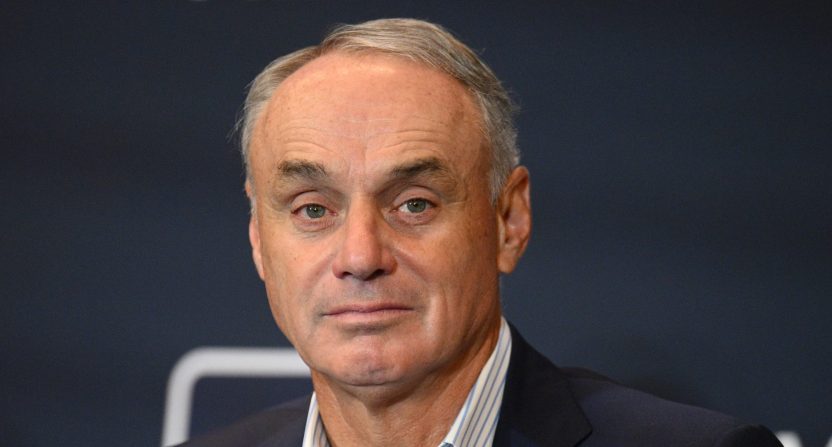Part of what makes the television business fascinating is that only a small portion of it is consumers directly paying broadcasters for a specific product. That’s true even with subscription services: Apple TV+ gets the same revenue from subscribers regardless of if they’re there for Ted Lasso, MLS, Schmigadoon!, or some combination thereof. But it’s even more notable in multichannel video provider (MVPD) bundles, from cable to satellite to virtual MVPDs like YouTube TV.
Most of those bundles don’t allow for low-end customization, which means that networks like TNT, ESPN and Fox News that are in even the basic bundles get hefty per-subscriber fees for each MVPD subscriber, regardless of if those subscribers ever watch their channel. And those per-subscriber fees are a key part of the economics for those networks, and often matter more than viewership and advertising revenue for particular games. That’s perhaps even more true when it comes to regional sports networks, and it’s been a huge part of carriage negotiations there. And it’s part of the discussion around the current bankruptcy/ownership transitions with the Bally Sports networks and the WBD Sports RSNs.
And for forever, MVPD executives like Dish/Sling’s Charlie Ergen have ranted about RSNs in particular. They’ve said they haven’t faced consumer pressure to bring RSNs back, claiming they’re not actually watched by most subscribers, and thus funded by a lot of per-subscriber fees from those who don’t care. It makes sense for the carriage-side executives to say things like that, of course; they want to downplay the value of those networks, and defend their stance not to carry them. But it’s fascinating to see this quiet part of the RSN economy get some loud discussion from a surprising source: MLB commissioner Rob Manfred. Here’s the money quote on that front from Manfred, which is placed near the end of a long article on MLB rights/RSNs/alternate distribution models and more from Evan Drellich of The Athletic:
“It’s a great business model when a whole bunch of people pay for something they don’t really care if they have or not, which is what the cable bundle did for us. It’s hard to replicate that.”https://t.co/BtFddMy5Ap
— Evan Drellich (@EvanDrellich) April 14, 2023
Again, this discussion of the problems with paying for channels viewers don’t actually watch has been around forever. But it’s usually been raised by either consumers themselves or by MVPD executives who are explaining why they aren’t willing to meet a network’s carriage demands. It’s quite fascinating to see a league executive admit that his league’s product wasn’t actually watched by a lot of the people who were funding it under the MVPD model. And it’s interesting to hear Manfred openly talking about that, and talking (later in the article) about how he expects at least short-term revenue losses as a result of these shifts. Here’s the full last part of Drellich’s article:
“The tougher challenge is the replication of the revenue,” Manfred said. “It’s a great business model when a whole bunch of people pay for something they don’t really care if they have or not, which is what the cable bundle did for us. It’s hard to replicate that.”
But Manfred and the head of the Players Association, Tony Clark, appear to agree on one point: the financial ding wouldn’t last long.
“There will be a downward tick on the revenue side. I think it’s going to be a trough,” Manfred said. “I firmly believe in the value of the content. And I really believe that we’re smart enough to figure out a combination of distribution mechanisms that keeps that revenue stream as a growing stream. If I’m wrong — and you know, I can be wrong — if I’m wrong, yeah, the relationship between revenue and player salaries in sports is pretty clear. Even if it’s not fixed in a salary cap system, our number is 48 percent (of revenue goes to players) kind of every year. … If revenue goes down, it’s bad for everybody involved.”
Of course, the separation between who wants a product and who pays for it can cut the other way as well, and that speaks to the “distribution mechanisms” Manfred is referencing. Much of the rest of Drellich’s article there touches on challenges for those who are willing to pay MLB/its teams to watch their product, but can’t do so thanks to current blackout restrictions (some of which prevent games from being streamed in areas where they’re not even actually offered linearly) or other issues. And that’s going to have to be part of the eventual solution here (and it’s far from clear what form that solution will take); the league needs to find ways to reach those who do want to watch it and do want to pay for it.
But MLB has long benefited from MVPD bundles, as has much of the sports world (and even networks beyond that; Fox News, CNN, Discovery and most cable networks all draw strong benefits from per-subscriber fees from those who don’t watch their content). That setup has brought in huge revenues for sports networks from even those uninterested in sports, and it’s let those networks negotiate huge per-subscriber fees, and justify those with live game rights, and spend massive amounts of money to get/keep those live rights. And it’s notable to hear Manfred discuss that so openly, and to see him admit that the shift here may have at least a short-term hit on revenue. And the real question for the long term is if even a model that allows for more purchasing of sports games from those who do want them makes up for losing per-subscriber revenue from those who don’t want them and no longer pay for them.
[The Athletic; top photo of Manfred in December from Orlando Ramirez/USA Today Sports]







